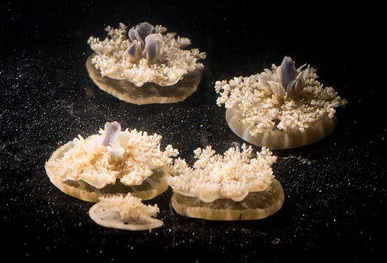Podcast: Play in new window

Snoozing jellyfish. I’m Bob Hirshon and this is Science Update.
A typical day for the Cassiopea jellyfish consists of sitting upside down on the seafloor, trailing its tentacles in the currents.
RAGI NATH (California Institute of Technology):
It sits in place, and it pulses, and that’s pretty much its behavioral repertoire.
HIRSHON:
That’s Caltech biologist Ravi Nath. He and his colleagues report in the journal Current Biology that despite its low-key lifestyle and lack of a brain, Cassiopea sleeps each night, pulsing more gently, ignoring stimuli and, if deprived of sleep, acts groggy and impaired. The discovery raises questions about the nature of sleep.
NATH:
Is sleep a property of neurons? Or is sleep a property of complex circuits? How complex of a system do you need before you start seeing something sleep?
HIRSHON:
He says discovering sleep’s evolutionary origins will help scientists better understand the phenomenon in us. I’m Bob Hirshon, for AAAS, the science society.
Story by Bob Hirshon
